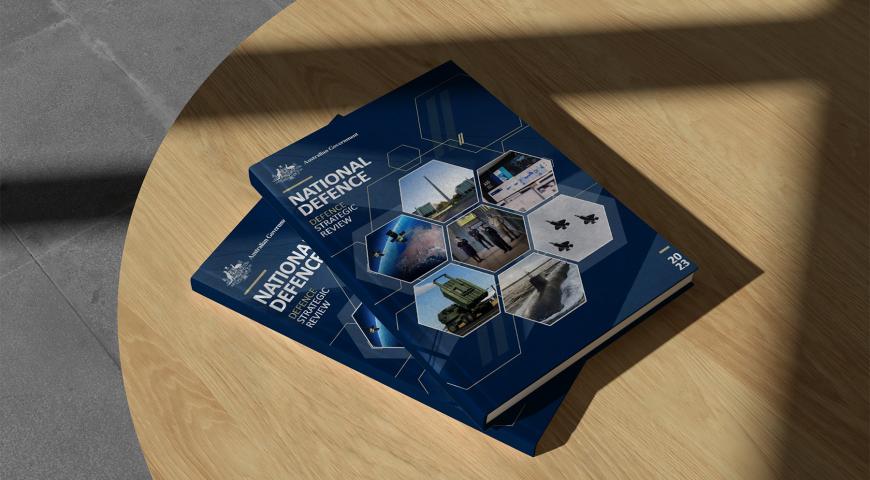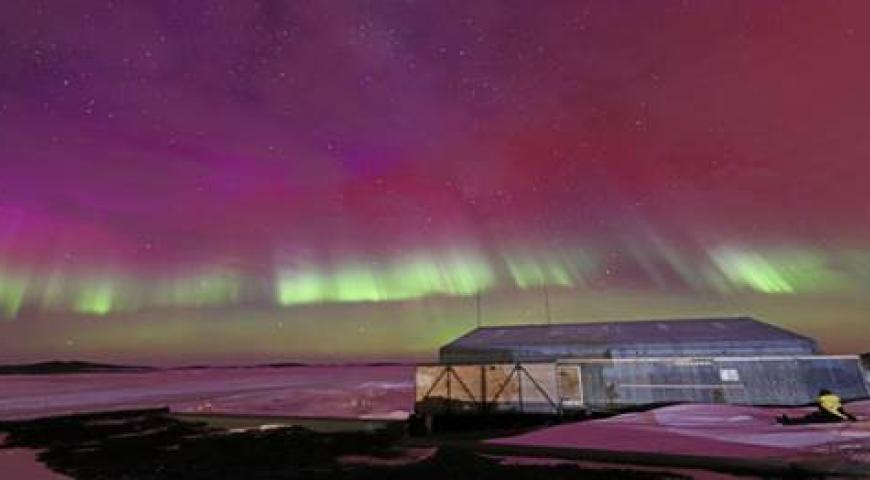Editor's Introduction to Effective Leadership in a Pandemic
In this article, we present a piece written during the early stages of the COVID-19 pandemic by Anne Goyne. ‘Effective Leadership in a Pandemic: Time To Look Back At What We Learned From COVID-19’offers an in-depth analysis of the global leadership response to the crisis. As the editor, I want to emphasise that the predictions and perspectives within the article were formed in the context of a rapidly evolving situation, with information and understanding that were current at the time. We have retained these initial insights and prognostications for their historical interest, giving our readers a window into the uncertainties and challenges that defined the early pandemic era. This retrospective allows us to appreciate the complexity and fluidity of crisis leadership and underscores the importance of adaptive, informed decision-making in times of global upheaval.
Introduction
While the difference between an ineffective, adequate or great leader is clearly important to the overarching success of a nation day to day, what is less clear is how important such distinctions are during a crisis, and in particular, a pandemic. Are the ‘qualities’ of a charismatic leader more or less important than what they communicate? More to the point, what does the public really need from their leaders in a crisis and what happens if these needs are not met?
The COVID-19 coronavirus pandemic is an extraordinary event, so much so the word ‘unprecedented’ is inextricably linked with it. However, it would be naïve to assume, in this age of climate change and environmental upheaval, similar events will not occur in our lifetime. Part 1 of this paper provides a brief overview of how nations and their leaders responded to the pandemic in real time. It is not a deep dive into the prevailing culture, outlook and mindset of these nations, but more an observation of the way key messages regarding the pandemic were sent and apparently received. In particular, an analysis of the messages from leaders who inspired an effective result compared with those who did not.
Part 2 of this paper concludes with a look at what went right or wrong under different leadership approaches in different countries, and a discussion about the lessons for military leadership. While deployed, military leaders operate in a milieu of controlled chaos. Only occasionally might the situation descend into crisis. However, as war drags on the more it can resemble what many experienced during the COVID pandemic, a drawn-out state of crisis where morale and standards are put to the test. In this scenario, the COVID-19 pandemic may have valuable lessons for both sides of the military-civilian divide.
Background to COVID-19
The first cases of coronavirus COVID-19 were officially reported to the World Health Organization (WHO) on 31 December 2019. Forty-four people with a ‘pneumonia of unknown origin’ were being treated in Wuhan City, Hubei Province, China. The illness appeared to be highly contagious and potentially deadly, especially to vulnerable people such as the elderly and immune-suppressed. As early as 14 January 2020, health authorities in Wuhan were contact tracing and measuring the temperature of travellers at public transport terminals in an effort to stem the spread.[1] On 23 January, three weeks after the WHO notification, Beijing ordered the ‘Wuhan Lockdown’ effectively shutting down the city. [2]
Six days after the initial WHO notification, 282 confirmed cases of the new virus were reported in four countries: China, Thailand, Japan and the Republic of Korea. By 2 January, 846 cases across six countries had been notified, all but one reporting a travel history to Wuhan City.[3] By 30 January the number of cases had ballooned to 7818 in 18 countries (including Australia, USA and Canada).[4] On 12 March, with 125,260 cases globally and 4613 deaths, coronavirus COVID-19 was labelled a pandemic.[5]
On the same day, Dr Hans Henri P. Kluge, WHO Regional Director in Europe, warned that COVID-19 was quickly spreading via community transmission and urgent steps to control it were needed. Dr Kluge recommended social distancing, frequent hand washing and sanitising, strict quarantine for all potential cases, remote working conditions, the closure of schools and universities, the avoidance of crowds and public transport, deferring all non-essential travel and special precautions for those considered most at risk, which now included people with a range of health and lifestyle conditions.[6]
After Dr Kluge’s announcement world leaders should have been in no doubt COVID-19 was a dangerous, highly contagious disease[7] that required a wide-ranging, well-organised and persistent response. Moreover, it should have been clear that every aspect of normal life was going to change with no apparent end state. Without decisive and carefully considered leadership, there was a risk individual countries, and potentially the world, could plunge into a social and economic abyss. Nevertheless, despite the apparent clarity, nations varied widely in how they responded to Dr Kluge’s message.
Responding to the Pandemic
Crisis, What Crisis?
In his review of how nations deal with crisis, Jared Diamond argued the most telling factor for an effective crisis response is whether there is a national consensus a crisis actually exists.[8] People, and especially leaders, needed to believe the COVID-19 pandemic was something serious that could happen to them. When dramatic images flooded the media showing people in Wuhan dying in the streets, being forcibly removed from their homes and even apparently having their front doors welded shut, the Western world reacted with criticism but not alarm. There was a kind of cultural dissonance that allowed people to convince themselves this was not a problem they needed to worry about.
Sandra Zampa, the Italian health ministry under-secretary, summed up the feeling in a New York Times article on 21 March, saying, ‘Italy looked at the example of China, not as a practical warning, but as a “science fiction movie that had nothing to do with us”. And when the virus exploded in Italy, Europe “looked at us the same way we looked at China”.’[9] As each new country witnessed what was happening somewhere else, the extent to which they believed ‘this could never happen here’ predicted their response.
Policy makers in many countries, but most notably Italy, Spain, France, the United States, the United Kingdom, Russia and Brazil, could and should have responded more rapidly; but arguably didn’t because of their own and their population’s perceptions and social biases. For example, when people in the UK saw what was happening in Italy, the rate of infection was attributed to something ‘typically Italian’.[10] Consequently, many British citizens failed to see the risk as relevant to them, even as the death toll in their own country surpassed that of Italy.
However, this does not entirely explain the rhetoric about the disease itself, which began to reveal something more concerning. The leaders of the UK[11] and the US engaged in an open public debate about the relative benefits of fighting the virus with a national lockdown or through ‘herd immunity’. Herd immunity only occurs when a sufficient percentage of the general population (estimated at between 40-60% for COVID-19[12]) is immune, thereby lowering the risk of community spread of the contagion. In the absence of a vaccine, herd immunity to COVID-19 would require 40-60% of the population developing lifetime immunity to the virus after infection. It is still unknown, and was certainly unknown when this discussion was occurring, if immunity to COVID-19 is even possible. Moreover, if a disease with a death rate of 3% is not managed it would result in around 300,000 deaths in the UK alone, and this would just be the first wave. If infection does not provide lifetime immunity, COVID-19 would eventually become a highly infectious, endemic disease similar to polio, malaria, TB and dysentery.
The herd immunity debate was troubling because it was an inspirational message at a time of great uncertainty. It created the impression there was a credible alternative to accepting the advice of the WHO to socially distance and shut down schools and workplaces. In a pandemic where the long-term effects of the disease are poorly understood, and which also has no cure, this was a dangerous gamble. More worryingly, it also revealed that the leaders of two large and influential countries had no idea what they were talking about.
By contrast, on 18 March, in a rare televised address, the German Chancellor, Angela Merkel, announced there would be no quick solution to the pandemic, that lockdowns would be the new normal and recovery was a long way off. The fact she was already a highly respected leader with a long track record of reliable and stable leadership helped her gain the willing support and trust of her people. However, in this instance, her background as a scientist invariably gave her the knowledge not to engage in a public debate about herd immunity, or any other inappropriate intervention, and to quickly see the long-term risk of such a discussion for population compliance.
The Importance of Experience
A lack of comprehension of the nature and urgency of the pandemic amongst leaders meant it was unlikely a population would acknowledge there was a crisis, or accept national responsibility for dealing with it. To emphasise this point, leaders in Italy, Spain and to a lesser extent France seemed almost paralysed by indecision in the face of COVID-19. It was not until 9 March, with over 9000 people infected that Italy finally locked down the country.[13] By contrast, Slovenia announced it would shut its border with Italy the next day. At this point, Slovenia had only 34 COVID-19 infections, but it could easily see what was coming.
Having another country as a model, or having previous experience of a similar crisis, was identified by Diamond as an important factor in responding to a national crisis.[14] Slovenia cancelled all indoor events of over 100 people and required sporting fixtures to go on without spectators.[15] With the example of their nearest neighbours, Slovenia and other Balkan countries managed COVID-19 very effectively.
Similarly, most Asian nations had previous experience confronting other deadly viruses and responded rapidly and effectively to COVID-19. One obvious exception was Japan. Japan had the complication of hosting the 2020 Olympics. As long as there was a chance the Olympics might go ahead, Japan’s leaders seemed eager to downplay the seriousness of COVID-19. As a result, Japan had a worse initial response to the virus compared with other countries in the region such as Taiwan, Singapore, Hong Kong, Thailand, Vietnam, Malaysia and China.
Authoritarian Government in a crisis
Having an authoritarian state structure appeared to lend itself well to the crackdown required to fight COVID-19, at least in China. On 17 February, 58,016 people in China were infected with the virus; just nine days later this number had dropped to 43,258. By 14 March, two days after the WHO announced the need for a lockdown, China had reduced the number of active infections to just 10,733.[16] We will never know exactly how this extraordinary reversal of fortune occurred in China, nor the accuracy of the statistics. Nevertheless, China revealed the power of authoritarian state control to adapt and address a crisis of this nature. Unfortunately, authoritarianism creates other problems.
At the beginning of the crisis authorities in Hubei Province seemed reluctant to openly share information about the new virus. Their focus appeared to be getting it under control before it became a worldwide catastrophe that could reflect badly on China’s reputation. This reluctance to share information resulted in flights into and out of Hubei Province continuing up until the Wuhan Lockdown on 23 January. It is unconscionable to imagine Chinese authorities knowingly allowed passengers carrying a deadly disease to fly around China and the globe. The only possible explanation for this disaster is the people authorising the flights had no awareness they were dealing with a deadly virus—despite the fact authorities in Wuhan had reported the virus to the WHO in December the previous year. Such a failure to openly communicate what was happening in their own borders would seem to rest at the feet of authoritarianism in China.
Possessing a Collective Mindset: The special case of mateship
The real test of how well a country was going to fight the pandemic was the extent to which individuals were willing to make personal sacrifices for the benefit of others. This required a collective spirit, the feeling we’re all in this together. It is not surprising that countries with a more collectivist culture, such as those in most of Asia, responded well to the pandemic. However, collectivism occurred in unexpected places.
While Australia has been described as a highly individualistic culture[17] (see Hofstede), second only to the United States on this variable, it might have been reasonable to predict Australians would react more individualistically and less collectively to COVID-19, but this was not the case. In Australia (and New Zealand) the welfare of the elderly and vulnerable, and especially those living in remote Indigenous communities, was seen as a national priority regardless of cost. While Australia had been primed to think more collectively after the recent bushfires, it is also fair to argue that in the event of a crisis there is a shift to a mateship culture in Australia where the majority of the population adopts a more collective spirit for the greater good.
Did Leadership Make a Difference? Yes it did
Sending an Effective Message – Be Quick, Be Correct, Be Concise and Care
During Australia’s 2019-20 ‘Black Summer’ bushfires, a new voice rose up to take charge of the situation—Shane Fitzsimmons, the Commissioner of the New South Wales Rural Fire Service. While there were other voices such as Gladys Berejiklian and Daniel Andrews, the Premiers of NSW and Victoria, it was Fitzsimmons, a man with no public profile prior to the fires, who consistently and effectively led Australians through this horrendous event. Unlike the premiers who had a broader political remit, Fitzsimmons had one main job: to provide timely, concise and correct information and to send a message that he cared. He did his job well and quite rightly became a national hero.
When we look at the behaviour of leaders who made a positive difference in the COVID-19 pandemic, reacting quickly with a concise, correct and caring message was vital. Tsai Ing-wen, Taiwan’s first female President, wrote about her country’s crisis response in Time magazine.[18] It is clear that well before the COVID-19 outbreak, Taiwan made many sensible decisions that prepared them for a pandemic. Nevertheless, the most important leadership action was to put the “government and our people on high alert early on”—and when she says ‘early on’, Ing-wen wasn’t talking about March 2020 after Dr Kluge’s WHO message, she meant December 2019. This ability to read the situation and send a strong and purposeful message to her people completely altered the trajectory of COVID-19 in Taiwan. Taiwan has remained largely virus-free despite its proximity to China, the epicentre of the virus.[19]
In Norway, Prime Minister Erna Soldberg reacted in a similar way when she shut down the whole country on 12 March. Four days after the shutdown, Soldberg held a ‘children only’ press conference answering questions directly from the children of Norway. She started by addressing the issue of fear head-on and allowed the children to focus on what mattered to them, e.g. whether they can have a birthday party. Giving direct, honest answers Soldberg shared a powerful message about the seriousness of the situation and the need to work together.[20] Even she has since pondered if the shutdown was too hard, but such a reflection is a luxury only a country with so few cases and deaths can even contemplate.[21] (At the time of the shut-down, Norway had the lowest rate of COVID-19 infection in the region, even so serious outbreaks still occurred.[22])
In Finland, Sanna Marin, the world’s youngest head of government,[23] provided clear and unambiguous messages about what the Finnish people needed to do, mostly echoing the recommendations of the WHO. Marin’s direct, down-to-earth approach resonated with the Finnish people and they followed her lead. Finland has the second lowest rate of COVID-19 infection amongst Nordic countries and a very low rate of death from this disease.[24]
Australia’s national leader, Scott Morrison, also showed a willingness to listen to scientific advice and be honest and direct with the Australian public. However, it was the state premiers who largely directed how each state responded. Using public appeals for a unified approach these leaders created a sense of urgency that formed a compelling, bipartisan and multi-jurisdictional message. Perhaps being well primed by the catastrophic bushfires of the previous summer, Australians were willing to listen to authorities and accept advice to stay home, wash hands regularly and socially distance. Australia became one of very few larger countries worldwide that might realistically expect to eradicate the community spread of COVID-19, even in the event of breakouts. Being an island has undoubtedly helped this situation considerably.
Across the ditch, the New Zealand Prime Minister, Jacinda Ardern, pitched herself onto the couch and appealed to New Zealanders to get behind the government’s efforts to fight COVID-19. In a similar way to Angela Merkel, her message focused on clear, concise and honest information, but most of all it was her care for her people that resonated—just as it had for Merkel. Moreover, she set the example herself by being at home socially distancing and demonstrated to all New Zealanders that the rules applied as much to her as anyone. While Ardern was still a young leader, her effective response to the tragic events of the Christchurch massacre also gave her credibility with her people. New Zealand has had one of the most successful national responses to the COVID-19 pandemic in the world.
In Part 2 of this series, we examine what went right or wrong for national leaders and what lessons in crisis management can be applied to military leadership.
1 WHO (2020). Novel Coronavirus (2019-nCoV) Situation Report 1, 21 Jan 2020.
2 Reuters (23 Jan 2020). Wuhan lockdown ‘unprecedented’, shows commitment to contain virus: WHO representative in China. Reuters.com
3 WHO (2020). Novel Coronavirus (2019-nCoV) Situation Report 4, 24 Jan 2020.
4 WHO (2020). Novel Coronavirus (2019-nCoV) Situation Report 10, 30 Jan 2020.
5 WHO (2020). Novel Coronavirus (2019-nCoV) Situation Report 52,12 Mar 2020.
6 WHO (2020). WHO Announces COVID-19 Outbreak a Pandemic: Statement by Dr Hans Henri P. Kluge, WHO Regional Director for Europe.
7 It was not known at the time that COVID-19 could be spread via an aspirant such as breath, rather than droplets in a sneeze. Had this been known, then the wearing of masks would have been recommended earlier in the pandemic.
8 Jared, Diamond. (2019). Upheaval: Turning Points for Nations in Crisis. Little, Brown and Company: New York.
9 Jason Horowitz, Emma Bubola & Elisabetta Povoledo (21 Mar 2020). Italy, Pandemic’s New Epicenter, Has Lessons for the World. www.nytimes.com
10 Antonello Guerrere (10 May 20). Italians are looking on aghast at the UK’s coronavirus response. theguardian.com
11 Ibid
12 Kevin Hartnett (30 Jun 20). The tricky Math of Herd Immunity for COVID-19, Quanta Magazine, qantamagazine.org
13 Ibid
14 Ibid
15 Marja Novak & Mark Heinrich (Mar 2020). Slovenia to Close Border with Italy over Coronavirus: PM. reuters.com
16 Worldometers COVID-19 Coronavirus Pandemic. Worldometers.info
17 Geert Hofstede Cultural Comparisons www.hofstede-insights.com
18 Ing-Wen, Tsai (16 Apr 2020). President of Taiwan: How my Country Prevented a Major Outbreak of COVID-19. Time.com.
19 Jessie Tu (Apr 2020). Taiwan’s first female president is delivering a stunning COVID-19 response. womensagenda.com.au
20 Young, Evan. (17 Mar 2020). ‘It’s okay to be scared’: Norway PM holds children-only COVID-19 press conference. Sbs.news.com.
21 Rolf, Brooke. (3 Jun 2020). ‘Was it necessary?’: The PM who regrets taking tough coronavirus lockdown measures. Au.news.yahoo.com
22 The Week. (12 Mar 2020). The entire country of Norway is ‘shutting down’. Theweek.com
23 Gordon F. Sander (6 Apr 2020). Premier of a pandemic: How millennial Sanna Marin won Finland’s approval. The Christian Science Monitor. scmonitor.com
24 Ibid
Defence Mastery
Technical Mastery
Social Mastery
Please let us know if you have discovered an issue with the content on this page.
Comments
Start the conversation by sharing your thoughts! Please login to comment. If you don't yet have an account registration is quick and easy.




